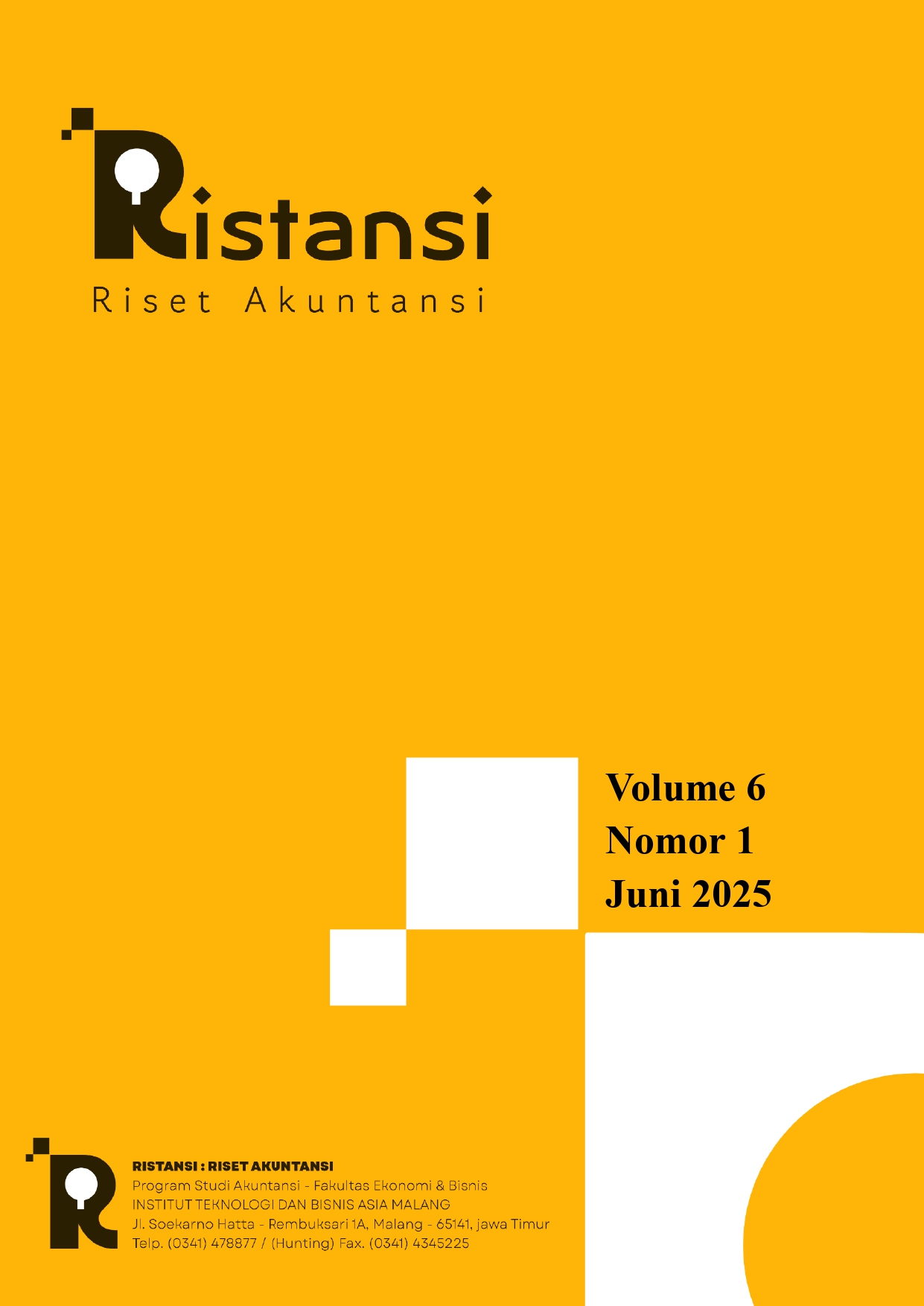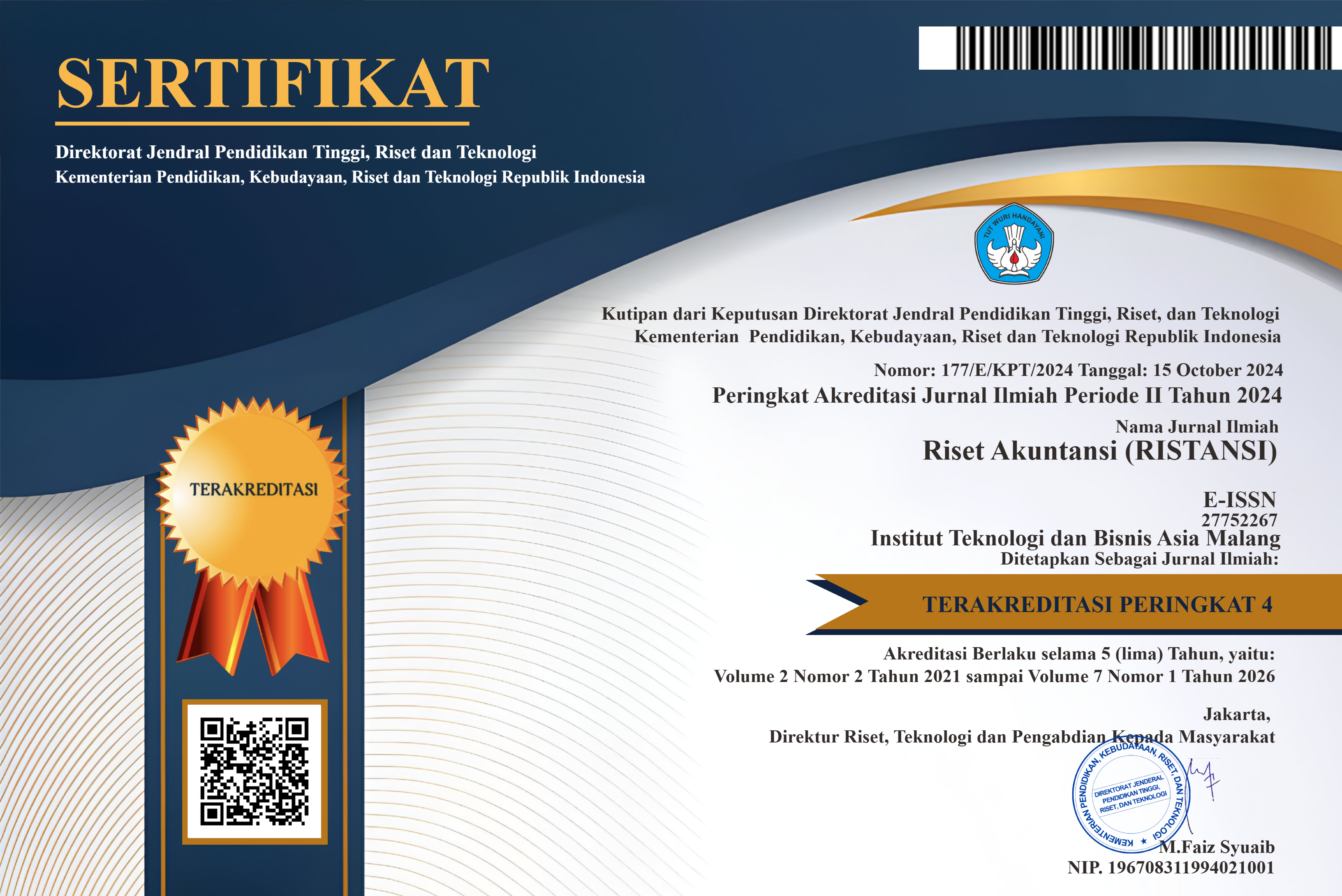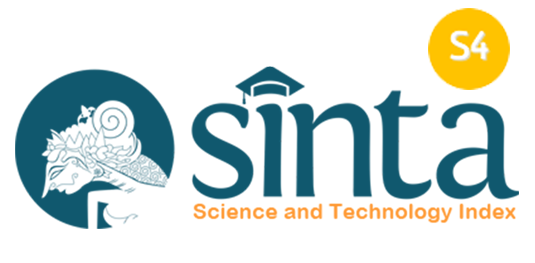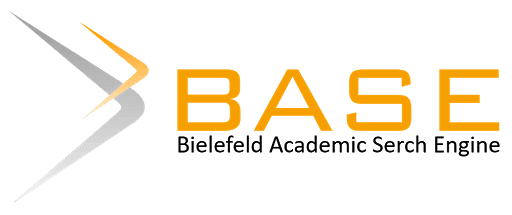PENINGKATAN KEPATUHAN PAJAK MELALUI DIGITALISASI: EFEKTIVITAS E-FILING DAN E-BILLING DI KPP PRATAMA SIDOARJO SELATAN
DOI:
https://doi.org/10.32815/ristansi.v6i1.2615Keywords:
Tax, Compliance, E-Filling, E-BillingAbstract
Digital transformation of taxation through the implementation of e-filing and e-billing has contributed to increasing tax compliance, reducing administrative burdens, and improving taxpayer experience at KPP Pratama Sidoarjo Selatan. This study uses a qualitative approach with a case study design and semi-structured interview techniques with individual taxpayers and MSMEs. The results show that ease of use of digital systems can increase compliance, but its effectiveness is influenced by the level of digital literacy, access to technology, and trust in system security. The main challenges include low digital literacy among elderly taxpayers, limited technical assistance, and system instability during peak reporting periods. This study emphasizes the importance of strengthening cybersecurity, increasing digital literacy, and integrating new technologies such as AI and blockchain to support an efficient, secure, and inclusive tax system.
References
Athira, A., & Lukose, P. J. J. (2023). Do common institutional owners’ activisms deter tax avoidance? Evidence from an emerging economy. Pacific-Basin Finance Journal, 80, 102090. https://doi.org/10.1016/j.pacfin.2023.102090
Braun, V., & Clarke, V. (2006). Using thematic analysis in psychology. Qualitative Research in Psychology, 3(2), 77–101. https://doi.org/10.1191/1478088706qp063oa
Bruce, M. R., Adekoya, A. F., Boateng, S., & Appiahene, P. (2022). Comparative Analysis of Taxation Techniques and Models used in Digital Economy. International Journal of Economics and Financial Issues, 12(6), 22–29. https://doi.org/10.32479/ijefi.13544
Chang, E.-C., & Huang, C.-Y. (2015). Technology Acceptance Model, Consumser Personality and Smartphone Users’ Satisfaction. In L. Robinson (Ed.), Marketing Dynamism & Sustainability: Things Change, Things Stay the Same… (pp. 710–712). Springer International Publishing. https://doi.org/10.1007/978-3-319-10912-1_227
Creswell, J. W., & Poth, C. N. (2016). Qualitative inquiry and research design: Choosing among five approaches. Sage publications.
Cusumano, M. A., Gawer, A., & Yoffie, D. B. (2021). Can self-regulation save digital platforms? Industrial and Corporate Change, 30(5), 1259–1285. https://doi.org/10.1093/icc/dtab052
Dang, V. C., & Tran, X. H. (2021). The impact of financial distress on tax avoidance: An empirical analysis of the Vietnamese listed companies. Cogent Business & Management, 8(1), 1953678. https://doi.org/10.1080/23311975.2021.1953678
Dede, D. L., Subhiyanto, Esthi Adityarini, & Mochamad Arief Madiansah. (2025). Analisis Implementasi Kecerdasan Buatan (Artificial Intelligence) Dalam Optimalisasi Proses Bisnis. Jurnal Sistem Informasi dan Teknologi (SINTEK), 5(1), 90–99. https://doi.org/10.56995/sintek.v5i1.135
Florensia, N. P., Nurulita, M. P., & Recita, G. (2024). Peran Distribusi Nilai Rata-Rata dalam Menganalisis Kualitas Layanan IT dengan Pendekatan Statistika untuk Pengukuran Kinerja Sistem. Teknik: Jurnal Ilmu Teknik dan Informatika, 4(2), 30–38.
Gangodawilage, D. (2021). Use of Technology to Manage Tax Compliance Behavior of Entrepreneurs in the Digital Economy. International Journal of Scientific and Research Publications (IJSRP), 11(3), 366–371. https://doi.org/10.29322/IJSRP.11.03.2021.p11150
Huang, Z. (2018). Discussion on the Development of Artificial Intelligence in Taxation. American Journal of Industrial and Business Management, 08(08), 1817–1824. https://doi.org/10.4236/ajibm.2018.88123
Krieger, T. (2021). A Model-Theoretical Analysis For Digital Tax Administrations. International Journal of Innovative Technologies in Economy, 2(34). https://doi.org/10.31435/rsglobal_ijite/30062021/7543
Le, A.-T., Huang, H. H., & Do, T. K. (2024). Navigating through cyberattacks: The role of tax aggressiveness. Journal of Corporate Finance, 88, 102649. https://doi.org/10.1016/j.jcorpfin.2024.102649
Pantielieieva, N. (2022). Digital Transformation of Tax Administration. Path of Science, 8(1), 3035–3051. https://doi.org/10.22178/pos.78-9
Park, Y., Mun, J., Choi, J., Choi, J., & Kim, H. (2021). A method to generate context information sets from analysis results with a unified abstraction model based on an extension of data enrichment scheme. Concurrency and Computation: Practice and Experience, 33(19), e6117. https://doi.org/10.1002/cpe.6117
Putri, V. R., Mohamad Yunus, M. H. S., Zakaria, N. B., Zifi, M. P., Sastrodiharjo, I., & Dewi, R. (2024). Tax Avoidance with Maqasid Syariah: Empirical Insights on Derivatives, Debt Shifting, Transfer Pricing, and Financial Distress. Journal of Risk and Financial Management, 17(11), 519. https://doi.org/10.3390/jrfm17110519
Raeni, R., & Sari, A. (2016). What are the Challenges in Designing An Effective Personal Income Tax System? Economics and Finance in Indonesia, 62(1), 59. https://doi.org/10.7454/efi.v62i1.523
Ramadhan, Moh. F., Janiman, J., & Muna, A. (2023). Taxpayer compliance factor related to technology: The influence of e-registration, e-spt, e-filling, and e-billing usage. Research Trend in Technology and Management, 1(2), 111–122. https://doi.org/10.56442/rttm.v1i22.13
Rusli, Y. M. (2019). Pengaruh Efektivitas Penerapan E-Filing dan Modernisasi Sistem Perpajakan Indonesia Terhadap Efektivitas Pemrosesan Data Perpajakan. Jurnal Akuntansi Bisnis, 12(1). https://doi.org/10.30813/jab.v12i1.1509
San, S., Nik Wan, N. Z., Razak, S., Saidi, N., Abd Aziz, A., Hussin, S. N. A., & Tumiran, S. D. (2023). Potential Factors Motivating Tax Compliance Among Small And Medium-Sized Enterprises (SMEs). Advanced International Journal of Business, Entrepreneurship and SMEs, 5(16), 56–65. https://doi.org/10.35631/AIJBES.516006
Stepnoff, I. M., & Kovalchuk, J. A. (2020). Digital challenges and tax equity. Digital Law Journal, 1(1), 39–58. https://doi.org/10.38044/DLJ-2020-1-1-39-58
Strauss, H., Fawcett, T., & Schutte, D. (2020). Tax Risk Assessment and Assurance Reform in Response to the Digitalised Economy. Journal of Telecommunications and the Digital Economy, 8(4), 96–126. https://doi.org/10.18080/jtde.v8n4.306
Trieu, H. D. X., Nguyen, P. V., Nguyen, T. T. M., Vu, HaiT. M., & Tran, KhoaT. (2023). Information technology capabilities and organizational ambidexterity facilitating organizational resilience and firm performance of SMEs. Asia Pacific Management Review, 28(4), 544–555. https://doi.org/10.1016/j.apmrv.2023.03.004
Vogelsang, K., Brink, H., & Packmohr, S. (2020). Measuring the Barriers to the Digital Transformation in Management Courses – A Mixed Methods Study. In R. A. Buchmann, A. Polini, B. Johansson, & D. Karagiannis (Eds.), Perspectives in Business Informatics Research (Vol. 398, pp. 19–34). Springer International Publishing. https://doi.org/10.1007/978-3-030-61140-8_2
Yin, Y., Stecke, K. E., & Li, D. (2018). The evolution of production systems from Industry 2.0 through Industry 4.0. International Journal of Production Research, 56(1–2), 848–861. https://doi.org/10.1080/00207543.2017.1403664
Downloads
Published
How to Cite
Issue
Section
License
Copyright (c) 2025 Erlyna Tri Rohmiatun, Riska Ainur Rosydida, Fastabiqul Khoiroh

This work is licensed under a Creative Commons Attribution 4.0 International License.














